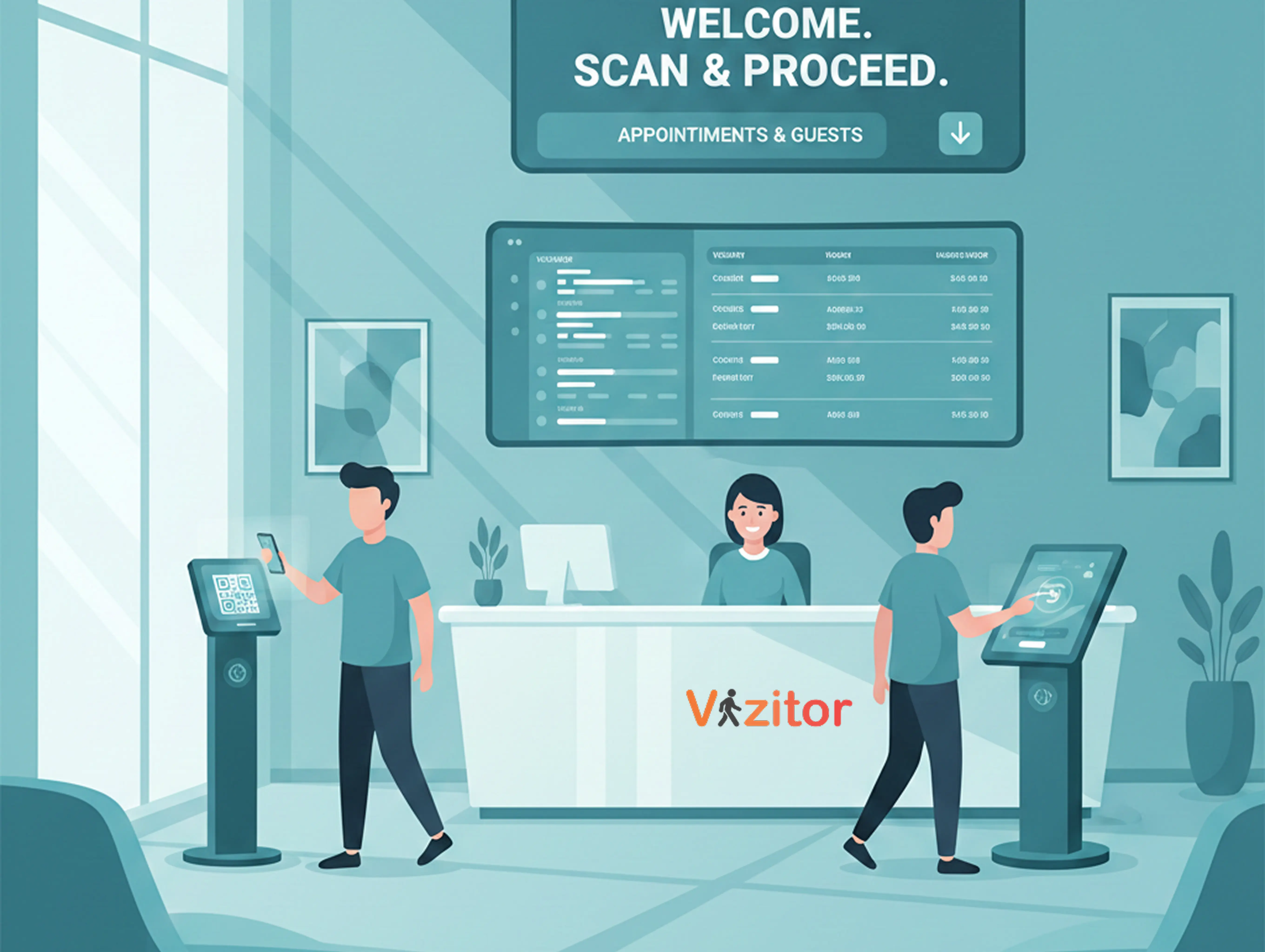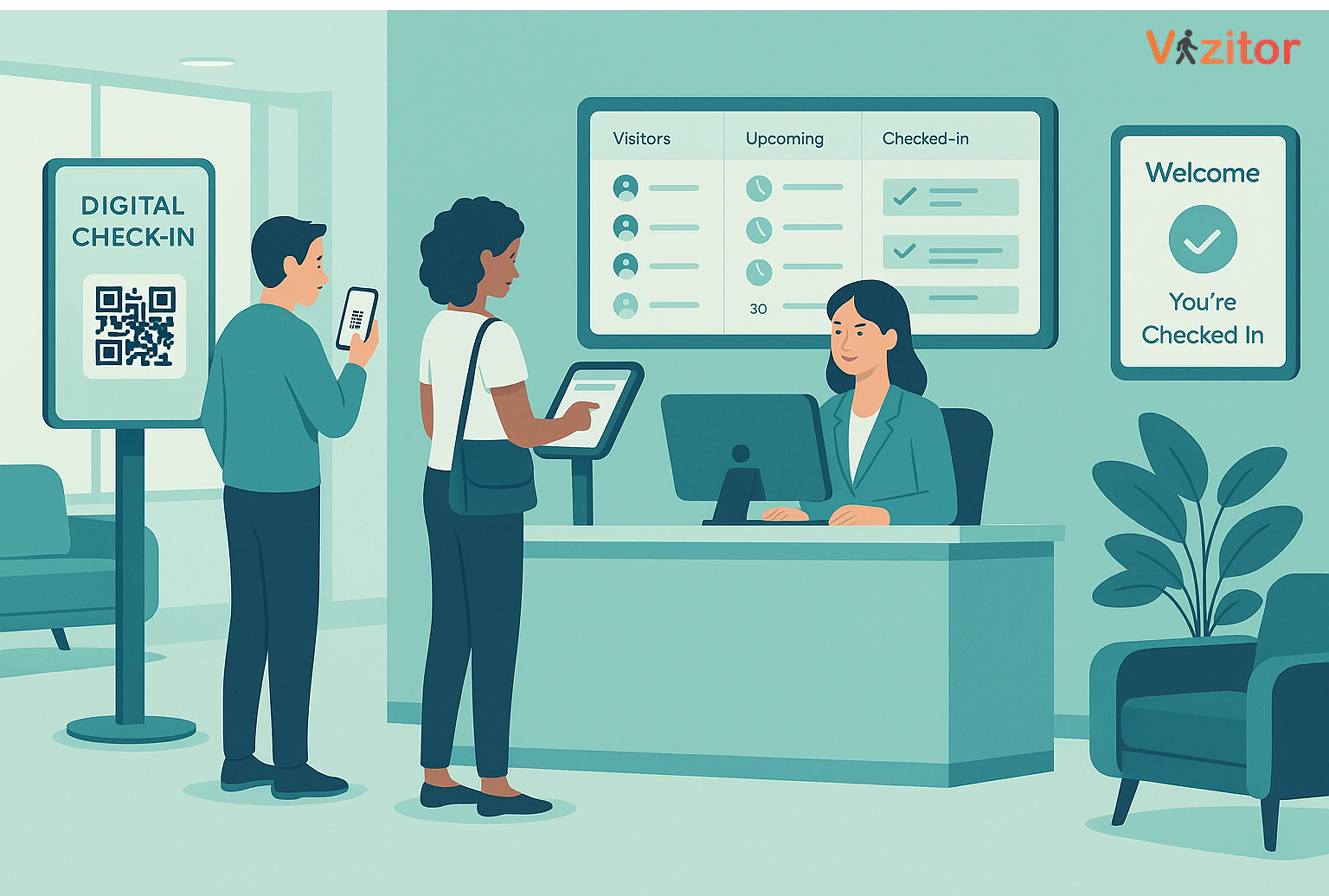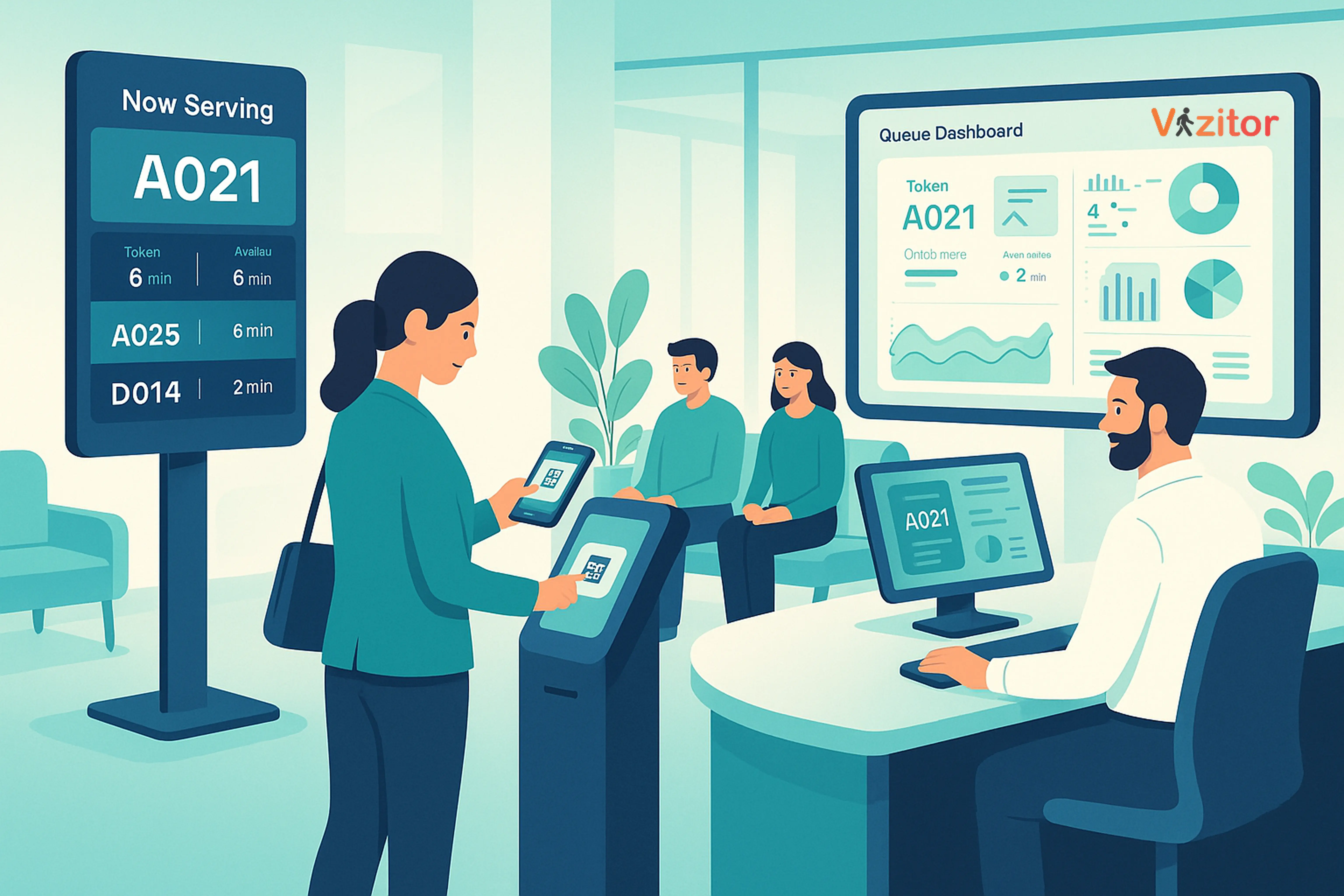How to Use an Attendance Management System Effectively
An Attendance Management System (AMS) Assists businesses track employee work hours, improve productivity, and ensure compliance at ease. From biometric logins to GPS-based remote tracking, AMS solutions automate attendance, integrate with payroll, and generate insightful reports. By adopting AMS, organizations can streamline HR operations, reduce errors, and foster transparency in the workplace.
Table of Content
Try Vizitor for Free!
Published on: Thu, Nov 28, 2024
Last updated: Updated on 13/09/2025
Read in 5 minutes
Tracking employee attendance and work hours is critical for managing productivity, ensuring compliance with company policies, and maintaining a transparent work environment. An Attendance Management System (AMS) automates this process, offering features that go beyond just marking attendance. These systems enable real-time tracking, provide insights into employee behavior, and streamline HR operations.
This guide explains how to effectively use an Attendance Management System for employee tracking during work hours, ensuring both efficiency and accountability.
What is an Attendance Management System (AMS)?
An Attendance Management System is a software solution that tracks and manages employee work hours, attendance, leaves, and overtime. Modern AMS solutions often integrate advanced technologies such as biometric devices, GPS tracking, and cloud-based platforms to offer real-time data and analytics.
Key Features:
Automated attendance logging
Real-time tracking of employee locations (if applicable)
Integration with payroll and leave management systems
Data visualization for attendance trends and productivity analysis
Benefits of Using an AMS for Employee Tracking
Accuracy: Eliminates manual errors in attendance records.
Transparency: Provides employees and employers with clear visibility into attendance data.
Productivity Monitoring: Tracks employee work hours and breaks.
Compliance: Ensures adherence to labor laws and organizational policies.
Data-Driven Insights: Offers analytics to improve workforce management.
Steps to Use an Attendance Management System for Employee Tracking
1. Set Up the System
Initial Setup:
Choose an AMS that aligns with your organization’s needs.
Integrate it with existing systems like HR management software or payroll systems.
Configure settings for work hours, break times, overtime, and leave policies.
Employee Enrollment:
Register employees in the system with unique IDs, biometrics, or login credentials.
Assign specific work schedules or shifts as required.
Hardware Integration:
Set up biometric devices, RFID scanners, or GPS trackers if needed.
For remote employees, ensure the AMS app is installed on their devices.
2. Track Attendance in Real-Time
For In-Office Employees:
Employees can mark attendance using biometric scanners or RFID cards.
The system logs check-in and check-out times automatically.
For Remote or Hybrid Employees:
Use GPS tracking or geofencing to verify remote employees’ locations during work hours.
Allow employees to clock in and out using mobile apps integrated with the AMS.
For Flexible Work Arrangements:
Enable features like flexible check-in times or work-from-home tracking.
Use activity tracking or project updates for more detailed monitoring.
3. Monitor Employee Work Hours
The AMS provides detailed logs of:
Total hours worked
Break durations
Overtime hours
Time spent on specific tasks or projects (if task tracking is integrated)
Pro Tip: Set up alerts for anomalies, such as employees logging excessive hours or frequent absences.
4. Generate Attendance and Productivity Reports
The system generates comprehensive reports that help in:
Tracking attendance trends (e.g., frequent tardiness or absenteeism).
Analyzing productivity by comparing logged hours against work output.
Identifying overworked employees or those underutilizing their time.
Use Case: HR teams can use these reports for performance reviews or to optimize workforce allocation.
5. Integrate with Payroll and Leave Management
AMS solutions streamline payroll processing by automating calculations for:
Regular work hours
Overtime pay
Deductions for unapproved absences
The system can also integrate leave balances, ensuring accurate payouts and policy compliance.
6. Ensure Data Security and Privacy
Tracking employees during work hours requires sensitive data handling. Ensure that the AMS complies with data protection regulations like GDPR or CCPA by:
Using encrypted data storage.
Restricting access to sensitive data to authorized personnel only.
Allowing employees to view their attendance records for transparency.
Best Practices for Using an AMS Effectively
Define Clear Policies: Communicate attendance and tracking policies to employees to avoid misunderstandings.
Train Employees: Provide training on how to use the system, whether it’s biometric devices or mobile apps.
Set Notifications: Enable automated reminders for employees to clock in or out.
Monitor Exceptions: Regularly review flagged anomalies, such as missed check-ins or extended breaks.
Avoid Micromanagement: Use the AMS to support productivity, not to create unnecessary pressure on employees.
Common Challenges and How to Address Them
Challenge 1: Resistance to Technology Some employees may be hesitant to use a new AMS. Solution: Provide clear benefits, like simplified leave requests and payroll accuracy.
Challenge 2: Privacy Concerns Employees may worry about GPS tracking or excessive monitoring. Solution: Set boundaries for tracking and ensure data is only used for attendance purposes.
Challenge 3: System Downtime Technical glitches can disrupt tracking. Solution: Choose a reliable AMS provider and have backup processes in place.
Technologies Enhancing AMS for Employee Tracking
Biometric Authentication: Prevents fraudulent attendance logging through fingerprint or facial recognition.
GPS and Geofencing: Tracks remote employee locations within predefined work zones.
Cloud-Based Platforms: Enables real-time access to attendance data from anywhere.
AI-Powered Insights: Analyzes patterns to predict absenteeism or workload imbalances.
Mobile Apps: Provides on-the-go attendance logging and management.
Top Use Cases of AMS for Employee Tracking
Field Teams: Track the movements and hours of sales teams or delivery personnel using GPS-based AMS.
Remote Workforce: Monitor attendance and productivity of remote employees in real-time.
Shift-Based Work: Schedule and track attendance for night shifts or rotational shifts seamlessly.
Manufacturing Units: Use biometric systems to ensure accurate attendance for workers in large facilities.
Conclusion: Transform Attendance Management with AMS
An Attendance Management System is more than just a tool for marking attendance, it’s a comprehensive solution for tracking employee productivity, ensuring compliance, and improving operational efficiency. By following the steps and best practices outlined above, businesses can streamline workforce management and foster a culture of accountability and transparency.
Ready to implement an AMS for your organization?
Click Here to Contact us today to explore solutions tailored to your business needs!
FAQs
Q1. How does an Attendance Management System track employees?
An AMS uses biometric devices, RFID cards, mobile apps, or GPS tracking to log employee work hours and attendance in real time.
Q2. Can AMS be used for remote employees?
Yes, cloud-based AMS with GPS and mobile app integration can accurately track remote and hybrid employees.
Q3. Is employee data safe in AMS?
Modern AMS solutions follow strict security standards like GDPR/CCPA compliance with encrypted storage.
Q4. How does AMS improve payroll accuracy?
It automatically calculates work hours, overtime, and leave deductions, reducing errors in salary processing.
Q5. Is AMS affordable for small businesses?
Yes, many providers offer scalable and cost-effective solutions, making it accessible for SMEs and startups.









